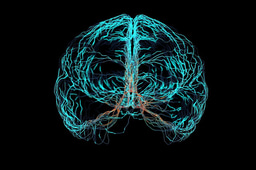Rather than tenuously cast about for a theme to blog about in this final post from EuCheMS (see yesterday’s post for such tenuousness) I’m just going to write about one talk I saw. I enjoyed it so much I scribbled as many pages of crabbed notes as I did for all of Monday! It was by Piero Baglioni and it was about his work developing materials and methods to restore and preserve works of art.
Apart from this being a very interesting subject in itself, it’s also one that can put chemistry in a very positive light in the wider world – something we can all be grateful for. And Baglioni is one of the best in this area, and also works in Florence, which has more than its fair share of pretty old – and pretty important – works of art as it was the hothouse of the Italian Renaissance.
Before the art, some chemistry. Frescoes – art painted directly onto fresh plaster – can start to flake because of minute changes in the surface of the plaster, caused by the slow reaction of calcium hydroxide with carbon dioxide then sulfuric acid from the atmosphere to form calcium sulfate. Treatment with ammonium carbonate and barium hydroxide nabs the sulfate. Other divalent metal hydroxides (calcium, magnesium and strontium) work too.
The problem is that getting your hydroxide to the plaster is tricky when there’s a pesky work of art in the way. This is where the nano-magic happens! Using nanoparticles of barium hydroxide does the trick, and simply painting on a colloidal suspension seems to reattach the paint and improve the image quality too – they look much ‘fresher’ and smoother.
Art restoration isn’t without its critics (read the Wikipedia page about the restoration of Michaelangelo’s Sistine chapel frescoes, for example), but this approach seems to be less interventionist than other methods. Indeed, another of Baglioni’s projects involves removing the polymers used in the past 20-30 years that were supposed to stabilise frescoes, but which have instead accelerated their destruction. This time it’s microemulsions and micelles that are used.
But how do you remove the emulsions and micelles once they’ve done their job? This is where it gets very clever: magnetic nanoparticles are also incorporated into the gels so they can be whipped off magnetically without the art suffering any physical contact!
I was equally impressed by the quality of art that Baglioni’s methods have restored: works by Gaddi in Florence’s Santa Croce church and Fra Angelico as well as the almost inestimably influential Masaccio frescoes. In the Brancacci chapel, these are credited as pivotal works in the Renaissance and were studied by Raphael and Michaelangelo.
So – even without mentioning the 3 other bloggable talks I went to today – it was a good end to an enjoyable conference. Auf wiedersehen from Nürnberg!
Neil
Neil Withers (Associate Editor, Nature Chemistry)





Please sign in or register for FREE
If you are a registered user on Research Communities by Springer Nature, please sign in